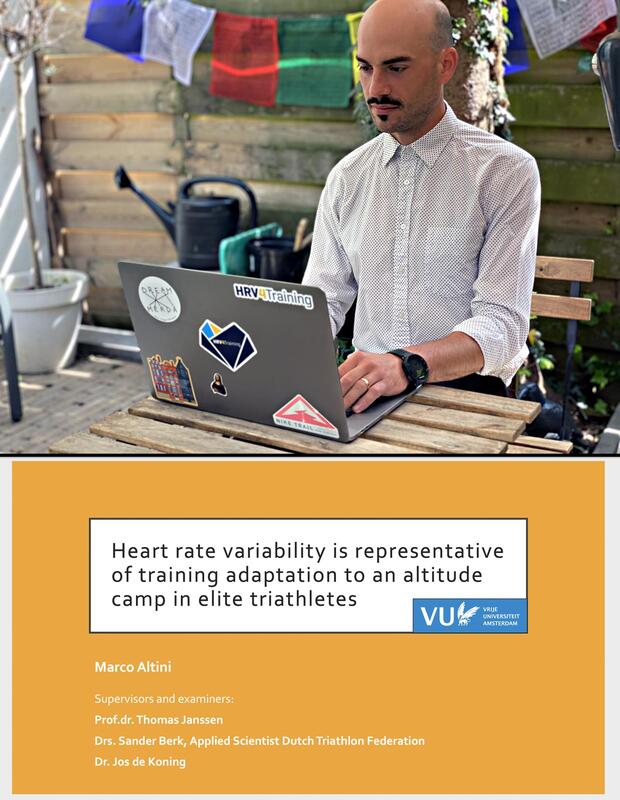|
I've discussed (virtually) my thesis at Vrije Universiteit Amsterdam and completed my Master's in Human Movement Sciences, specializing in high performance coaching. Abstract of my thesis below or at this link.
We will submit this work for publication, hence at this stage the full text is not available. Objectives: To determine if changes in resting heart rate (HR) and heart rate variability (HRV) during the beginning (first 10 days) of a three-week training camp at altitude are representative of the athlete's training adaptation at the end of the training camp. Methods: Four elite triathletes (2 male and 2 female), spent 23 days in Namibia at 1655 meters of altitude for two consecutive years in January 2019 and January 2020. Resting HR and HRV (the root mean square of successive RR intervals, or rMSSD) were measured daily upon wakening, while training data (GPS, heart rate) was acquired during cycling and running workouts. The athlete group was divided in responders and non-responders to the training camp at altitude based on the ratio between velocity and heart rate during aerobic running workouts of moderate duration. In particular, athletes whose velocity to heart rate ratio during workouts at week three was within the athlete's smallest worthwhile change (SWC) of pre-camp values, were considered responders. The difference in resting heart rate, rMSSD and the coefficient of variation of rMSSD (CV rMSSD) between the two weeks prior to the training camp and the beginning (first 10 days) of the training camp were computed as potential markers of future training adaptation. Results: Resting HR was significantly more elevated during the beginning of the training camp for non-responders (N = 3, HR difference = +4.6 bpm) with respect to responders (N = 4, HR difference = +0.5 bpm, p = 0.023). The CV rMSSD also increased by a greater extent for non-responders (+10%) with respect to re-sponders (-3%, p = 0.015). The difference in rMSSD was lower during the first week of camp for non-responders (-10 ms) with respect to responders (+6 ms), but this difference was not significant (p = 0.336). Conclusions: Athletes that responded positively to a three-week training camp at altitude showed a more favorable physiological response during the beginning of the training camp (smaller resting HR difference, lower CV rMSSD). This information can be used to further adjust training plans at the individual level. Comments are closed.
|
Marco ALtiniFounder of HRV4Training, Advisor @Oura , Guest Lecturer @VUamsterdam , Editor @ieeepervasive. PhD Data Science, 2x MSc: Sport Science, Computer Science Engineering. Runner Archives
May 2023
|

 RSS Feed
RSS Feed